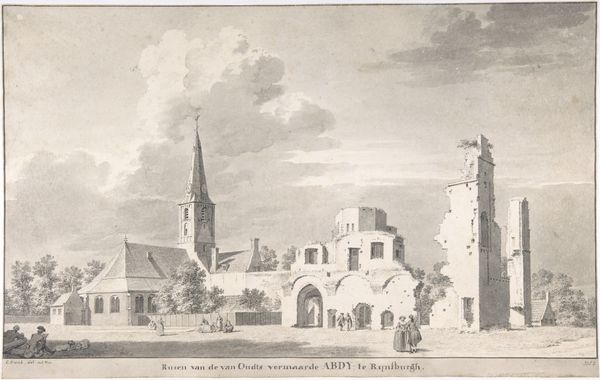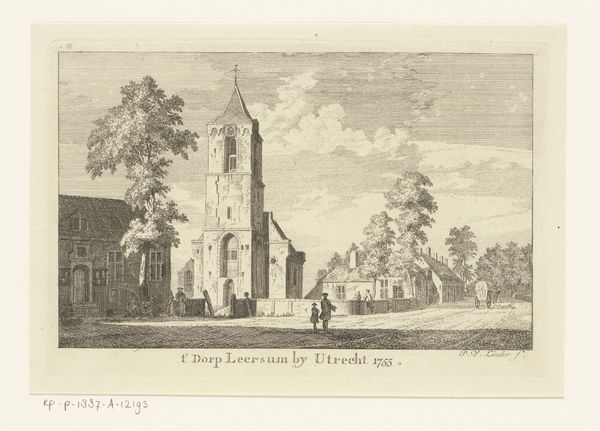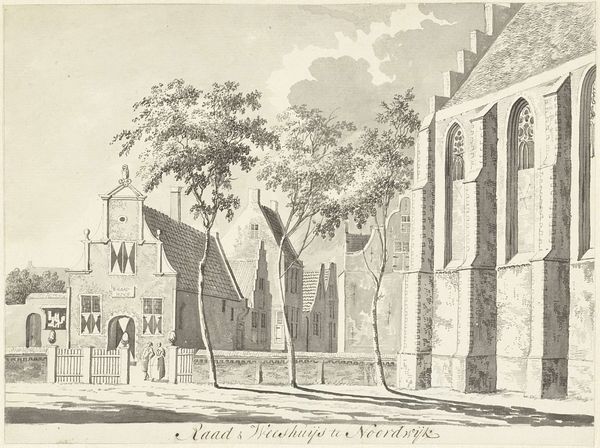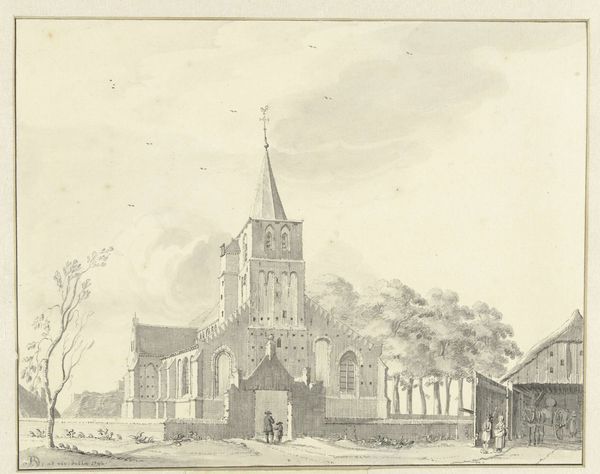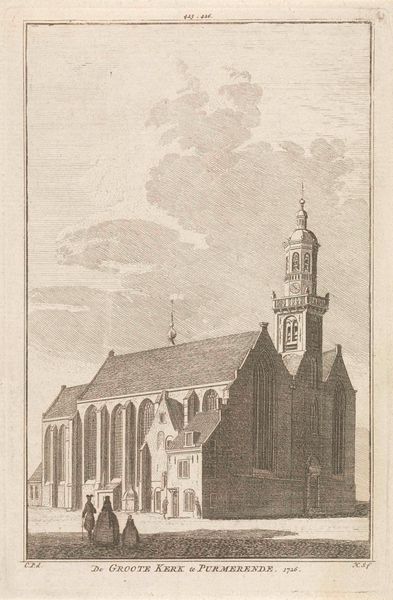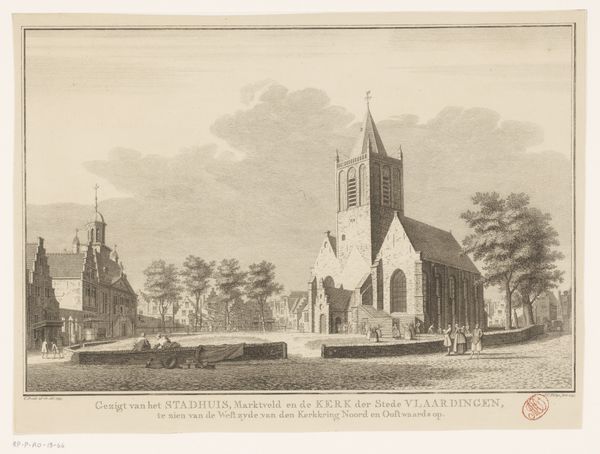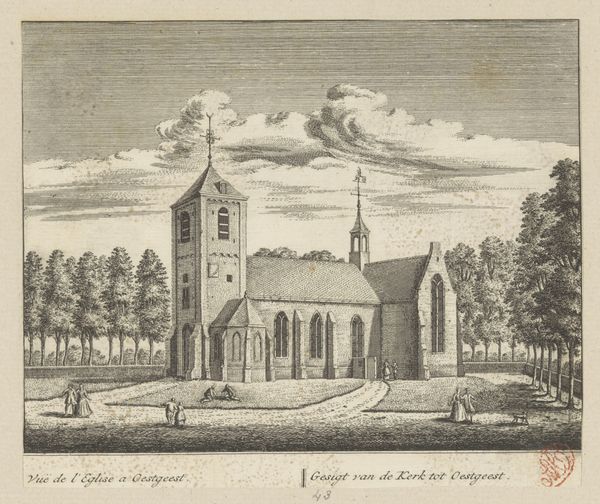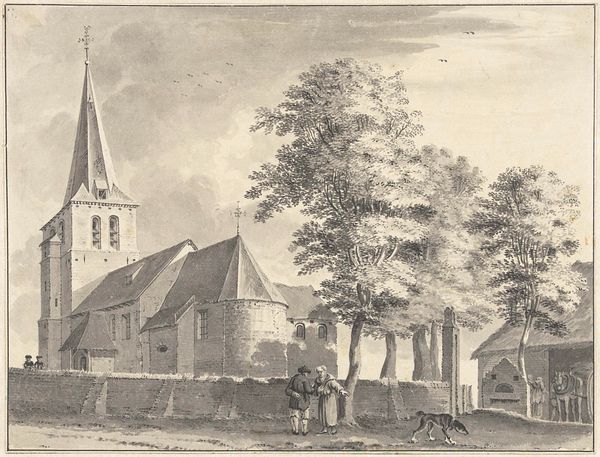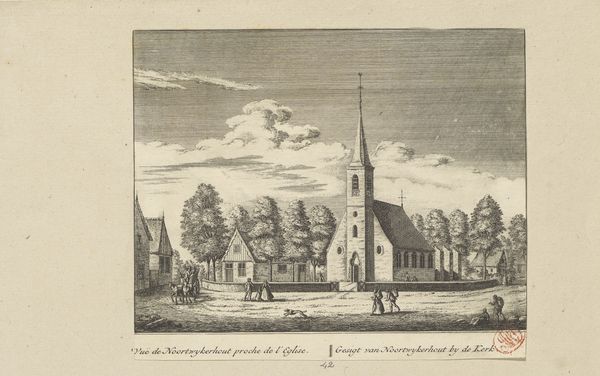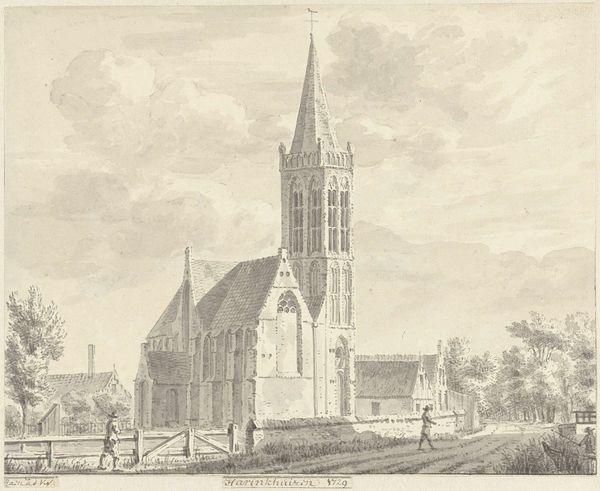
Dimensions: height 160 mm, width 210 mm
Copyright: Rijks Museum: Open Domain
Curator: This etching, "Gezicht op de kerk en abdij te Rijnsburg" – or "View of the Church and Abbey at Rijnsburg" – comes to us from the hand of Hendrik Spilman. It's hard to nail down the exact date, somewhere between 1742 and 1784. It’s currently housed here at the Rijksmuseum. Editor: There's a quiet dignity to it, don't you think? The way the buildings rise up from the landscape, softened by the trees...and yet, those stark ruins on the left. There’s a real sense of contrast, but not in a jarring way. Curator: That tension is central, I believe. The image reflects the socio-political shifts underway in the 18th century, you know? Spilman is offering a vision of Dutch heritage and tradition during a time of enormous change, showing us decay next to continued function. It raises so many questions: Which elements are valued and which are neglected? Why? Editor: Right, that juxtaposition immediately sparks dialogue about structures and power dynamics. Churches, historically, and the slow crumble of, perhaps, outdated power? The almost ghostly figures of people contrast against a real community hub – it could be about societal shifts at large. What else do we know about Spilman’s life to further support such dialogue? Curator: Spilman was primarily a printmaker and worked for several publishers, documenting topographical views and historical scenes. These images weren’t simply documentation; they were also instruments of national identity formation. They sold! I see Spilman balancing a romantic sensibility with documentary impulse. Editor: I'd push that even further to state that his artistic output promoted, perhaps, problematic elements regarding nationalism, but maybe I’m going too far. The way these seemingly benign landscapes reinforced certain societal structures should always be analyzed, but to critique an eighteenth-century artist too harshly using contemporary values risks feeling anachronistic, of course. Still, the themes resonate even now, as do the tensions the artwork explores. Curator: Indeed. Even though his style embraces established aesthetics, these cityscapes can still invite the kind of cultural deconstruction you are leaning into, to question why the world is framed as it is. It gives the artwork a strange kind of modernity. Editor: I'm forever thankful for these layers.
Comments
No comments
Be the first to comment and join the conversation on the ultimate creative platform.
